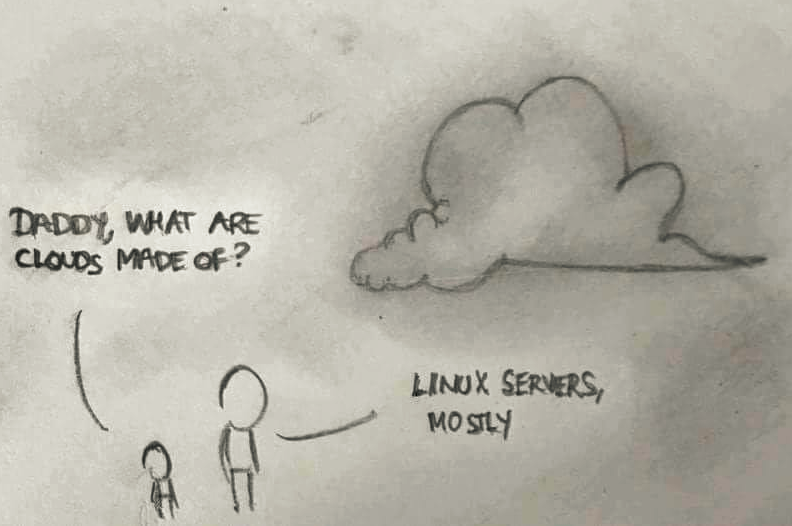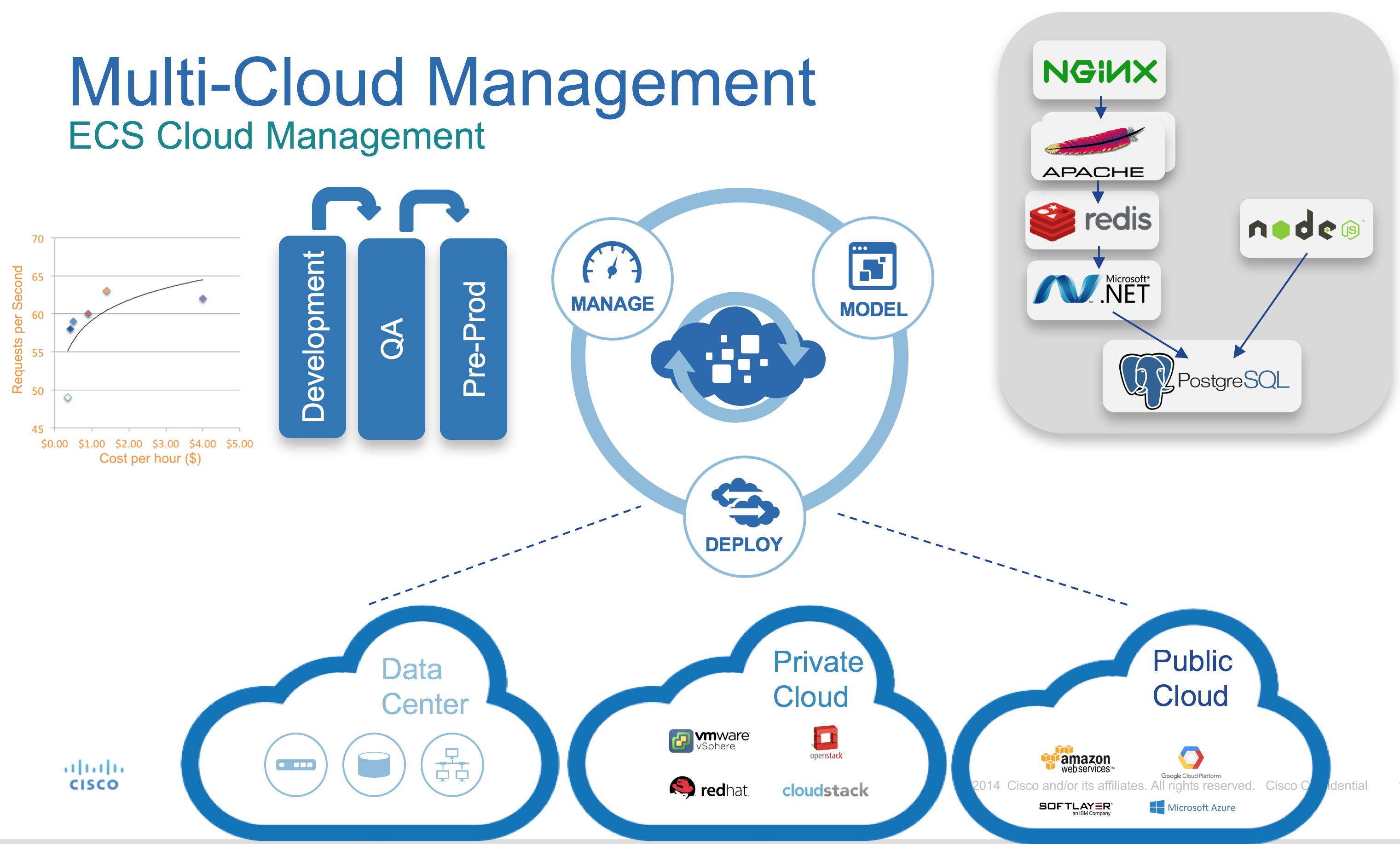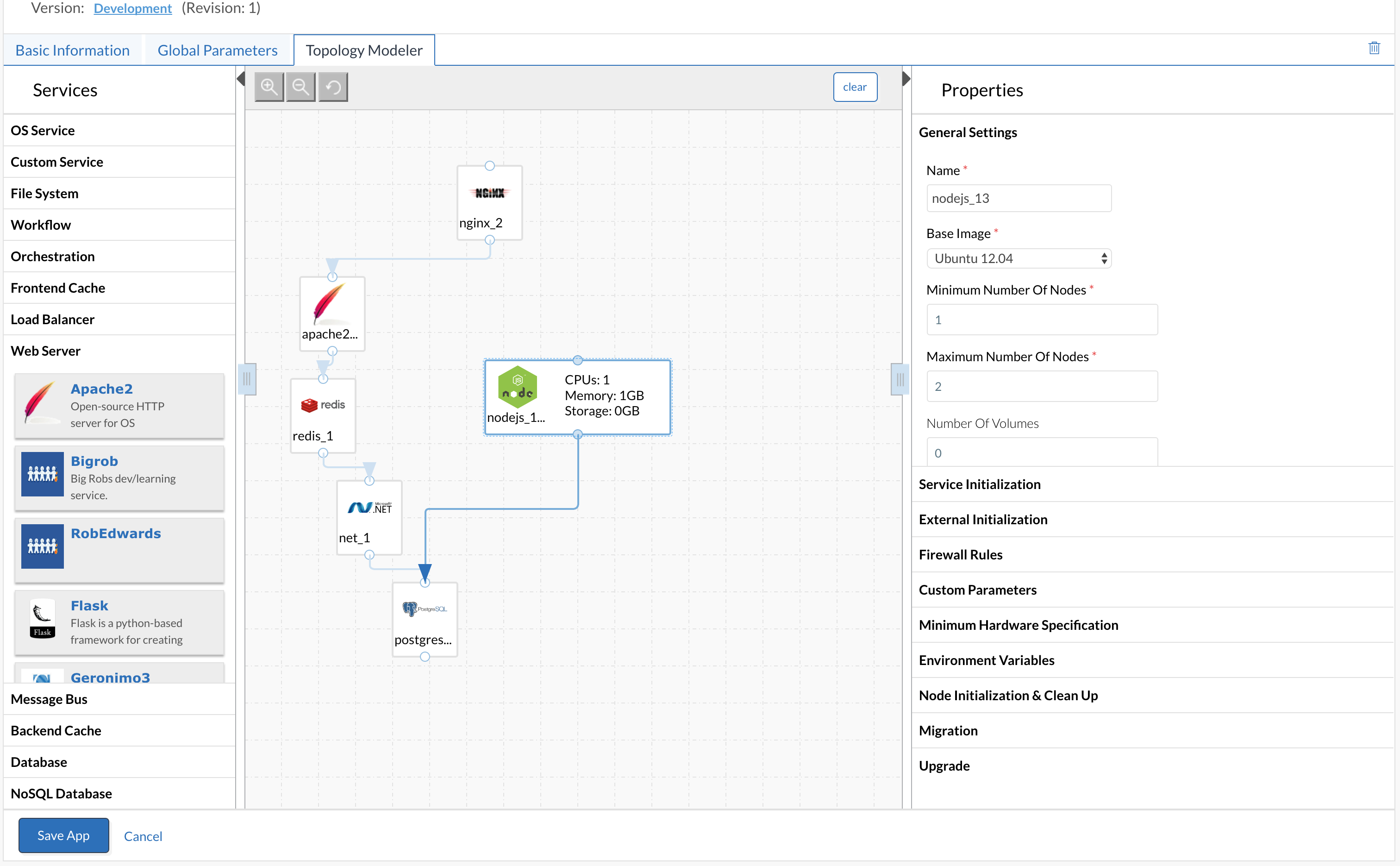Cisco CloudCenter - Any Application. Any Cloud. One platform

“Dad, what are the clouds made of?”
- Linux server is basically ...
Hello everyone, for a long time something I did not take into the hands of a pen ... By an interesting coincidence, I got a job at a company that collaborated with another company in the field of cloud technologies. At the old job, it was necessary to work out 3 months and there was another new year, in a word, when I came to work for them, it turned out that: first, they were sold and now some of them are not at all a small such company (I don’t deliberately mention the names in order not to be considered advertising ), and secondly, the cloud company which was originally Cliqr (who might even know them by the name of the startup as osmosix) now turned out to be part of Cisco and changed its name to CloudCenter.
Since I didn’t find anything here about this platform, and I’m only working with her now, I decided to tell you briefly what it is, if there is interest, I can tell you next time and how to cook :) I’ll start from far away ...

')
The origin of the term “Cloud Computing” is not known for certain. The word "cloud" is often used by scientists to describe a large cluster of objects that visually from a greater distance look like a cloud and describes any group of something there that does not mean their detailed description in this context. The term “cloud” was used to refer to platforms for shared computing, and the term popularization can be traced from 2006, when Amazon.com introduced its Elastic Compute Cloud.
Nowadays, "clouds" are the result of the evolution and application of existing IT technologies and paradigms, and at the present moment there are many providers of cloud technologies. The largest of which are: Amazon, Azure, Google, IBM, HP, VMware, and many others. So it’s not a problem for a user to choose for himself the taste and color, as they say, what suits best for their needs and possibilities, but at the same time, requires knowledge of how to choose the chosen cloud and how to correctly use each cloud to achieve the best result. It would seem, how to understand all this and what to do if you just want to throw your aplikeyshin stack into the cloud as quickly as possible, having very basic concepts about it? Answer: use Cisco CloudCenter!

Cisco CloudCenter (we usually reduce to C3) is essentially a unique centralized management platform that, right out of the box, safely and effectively allows you to start deploying your chosen stack of technologies and data in any cloud from which cloud providers support this type of data, as well as You can also deploy in a hybrid cloud when part of the infrastructure is in private mode, and the other part is in public access.
The current version of C3 is 4.8, it allows you to very rationally simplify deployment complexity and essentially separates administrators who can fully control the capabilities of user groups (who, what and where) using system rules and tags, and users themselves who can easily from the internal market or independently Simulated structures can be deployed to any available cloud without delving into their specific features, and, on the fly, perform a performance assessment and determine the price. Using internal settings, you can specify, for example, how many additional virtual machines-nodes to run, and which cloud, depending on the budget, time of day, region and load level. All this automatically balances without the subsequent participation of the user. You can emigrate to a cloud some kind of one system into a cloud and then add others to the same or different ones, but still everything will work as one.
All the power and beauty of CloudCenter in the visual GUI, which, right in the browser with several drag-and-drop'es, allows expressing complex structures and logical interconnections to do so, and to do this as quickly and efficiently as possible.

Through modeling, a profile (json file) is created that can be exported / imported, which will contain a logical relationship between the elements of the structure and, through the cloud-specific orchestrator, will be performed in the best possible way in the right cloud using “best praktis” so to speak.
C3 have REST API with which you can do different integrations and control the system from the console so to speak, DevOps should really fall in love with this system :) I already :) setting up clouds and regions is very simple by setting up user groups users, you can share as the permissions to the clouds and the permission to deploy in different environments. In addition, you can set up triggers which, for example, will help curb careless developers who run expensive multi-core instances in the cloud and go home and forget to turn it off ... testing, it migrates to the test environment (possibly to another cloud) and after passing the tests (bang, bang and production!) it is also easy to deploy to the working environment.
The latest version has added support for so-called BROWNFIELD machines, that is, let's say you already have a datacenter with vCenter, you can easily deploy C3 there and take control of already deployed virtual machines. Excellent integration with Cicso UCSD, Cisco ACI and all third-party products such as different IPAM or for example turbonomic. Dokerization (docker everything is ours!) Is supported by Jenkins and Poupet with Chif (not, well, why not? :)) Finally, a short video:
If you are interested in something else about CloudCenter - feel free to ask, I’m really not a wizard and just learning :) but I will try to answer all the questions.
Source: https://habr.com/ru/post/329734/
All Articles